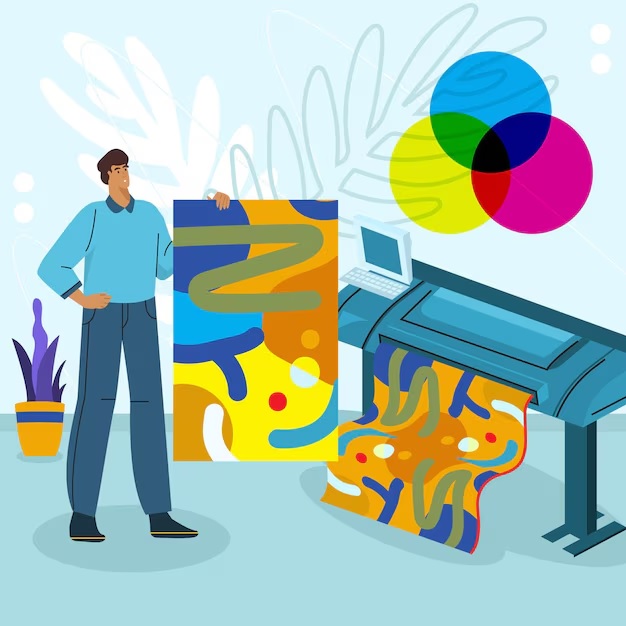The Art of Fine Art Printing: Tips and Techniques to Produce the Perfect Print
Art lovers are constantly seeking ways to bring their favorite artwork to life in the most captivating and authentic way possible. Fine art printing offers a remarkable opportunity to reproduce artwork with meticulous attention to detail, vibrant colors, and exceptional quality. This blog post delves into the art of fine art printing, exploring the techniques, tips, and considerations that can help you produce the perfect print.
Digital Print Vs Traditional Print
In today’s era of modern technology, printing has come a long way. With a plethora of printing methods available, it can be overwhelming for a layman to choose the best-suited option. The two most common printing methods are digital and traditional printing.
- Digital printing, also known as fine art printing or giclée printing, is a specialized technique that employs high-quality printers and archival inks to create museum-grade reproductions of artwork. Unlike traditional printing methods, fine art printing ensures accurate color reproduction, superior detail retention, and longevity. It allows you to capture the essence and subtleties of original artwork, making it a popular choice for artists, collectors, and galleries.
- Traditional printing is a process that involves transferring ink onto paper using plates, rollers, and other equipment. Traditional printing offers a range of customization options such as ink type and color, paper quality, and printing technique, which gives the output a unique and high-quality feel.
Choosing the Right Printer and Inks
Investing in a professional-grade printer is crucial for achieving exceptional print quality. Look for printers that utilize advanced inkjet technology specifically designed for fine art printing. These printers offer a wider color gamut, superior color accuracy, and precise ink droplet placement. Additionally, opt for archival pigment inks that provide fade resistance and longevity, ensuring your prints retain their vibrancy and integrity over time.
Color Calibration and Profiling
To achieve accurate color reproduction, proper color calibration and profiling are essential. Calibrating your monitor ensures that the colors you see on the screen are consistent and reliable. Additionally, creating printer profiles specific to your printer, inks, and paper combination ensures that the printed colors closely match your calibrated monitor. Utilize color management tools and software to achieve consistent and accurate color reproduction across your workflow.
Prepping Files for Printing to Ensure Accurate Color Output
When it comes to printing, accurate color output is key. You don’t want your carefully crafted design to look different on paper than it does on your computer screen. That’s why it’s important to properly prepare your files before sending them off to the printer. Whether you’re printing a brochure, flyer, or poster, there are certain steps you should take to ensure the colors come out just right. Start by checking that your color profile is set to CMYK (cyan, magenta, yellow, and black) instead of RGB (red, green, and blue). You should make sure that any images you use are high-resolution and don’t have any overlapping colors or transparency issues.
Fine-Tuning the Printing Process
The printing process involves several crucial steps that require attention to detail. Before printing, make sure your artwork is properly prepared and optimized for print. Resize the image to the desired print size, adjust the resolution to ensure optimal sharpness, and make any necessary color corrections. Perform test prints on small sections of the image to evaluate color accuracy and make any final adjustments before proceeding with the full-sized print.
Print Handling and Care
Once your fine art prints are ready, proper handling and care are essential to ensure their longevity and preservation. Always handle prints with clean, dry hands to avoid smudging or transferring oils. Consider using gloves to protect the surface of the prints. Store prints in acid-free archival sleeves or portfolios to protect them from dust, moisture, and UV light. Display prints away from direct sunlight or fluorescent lighting to minimize fading.
Fine art printing is a remarkable technique that allows art enthusiasts and artists to reproduce artwork with exceptional quality and precision. By understanding the techniques and considerations involved in fine art printing, you can achieve prints that accurately capture the beauty, detail, and colors of the original artwork. From selecting the right printer and inks to choosing the ideal paper and fine-tuning the printing, several factors will help you to produce the perfect print.


